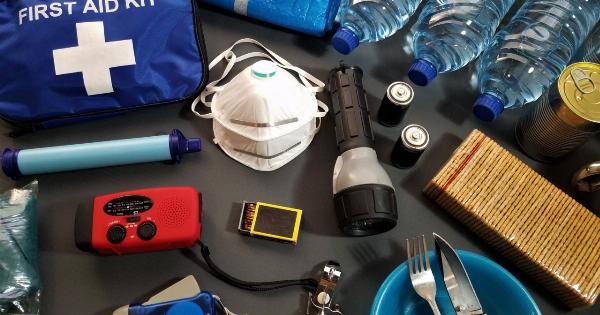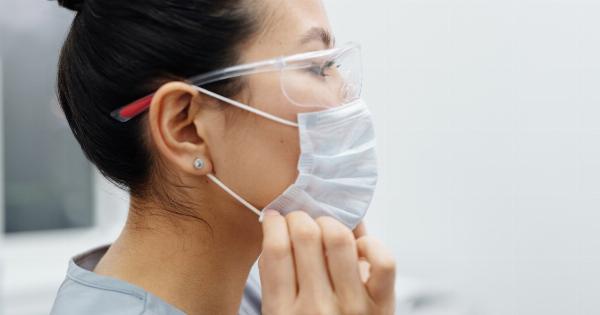Workplace hazards can pose a serious risk to your health and well-being.
Whether you work in an office, a construction site, a factory, or any other type of workplace, it is important to be aware of the potential hazards that exist and take appropriate measures to protect yourself. In this article, we will explore some common workplace hazards and discuss the impact they can have on your health.
1. Chemical Hazards
Chemical hazards are one of the most prevalent workplace hazards, particularly in industries such as manufacturing, healthcare, and laboratories.
Exposure to hazardous chemicals can lead to a wide range of health issues, including respiratory problems, skin irritations, chemical burns, and even long-term conditions such as cancer. It is crucial to use proper personal protective equipment (PPE) and follow safety protocols when working with or around chemicals to minimize the risk of exposure.
2. Physical Hazards
Physical hazards refer to any factor in the workplace environment that can cause harm without necessarily involving chemicals. This category includes hazards such as noise, vibration, radiation, extreme temperatures, and ergonomic risks.
Prolonged exposure to excessive noise levels, for example, can result in hearing loss, while improper ergonomics can lead to musculoskeletal disorders. Employers should implement measures like soundproofing, providing protective gear, and ensuring ergonomic workstations to mitigate these hazards.
3. Biological Hazards
Biological hazards are present in healthcare facilities, laboratories, and any other workplaces where employees may come into contact with biological materials such as bacteria, viruses, or fungi.
Exposure to these hazards can result in infectious diseases or allergic reactions. It is essential for employers to provide appropriate training, implement strict infection control measures, and ensure the availability of personal protective equipment like gloves and masks to safeguard employees from biological hazards.
4. Psychosocial Hazards
Psychosocial hazards focus on factors within the workplace that can affect employees’ psychological and social well-being.
These hazards can include excessive workloads, long working hours, lack of support from colleagues or superiors, workplace violence, and bullying. Such conditions can lead to mental health issues like stress, anxiety, depression, and burnout.
Employers should promote a positive work environment, establish clear communication channels, and offer support mechanisms to help prevent or manage psychosocial hazards.
5. Electrical Hazards
Electrical hazards are prevalent in workplaces where electrical equipment or systems are present, such as construction sites, manufacturing plants, or office environments.
Electric shocks can cause serious injuries, including burns, cardiac arrest, and even death. Regular inspection of electrical systems, proper grounding of equipment, and training employees on electrical safety practices are essential to mitigate the risks associated with electrical hazards.
6. Fire Hazards
Fire hazards can exist in any workplace, although some industries carry a higher risk due to the presence of flammable materials or processes.
Inadequate fire prevention measures, lack of fire alarms and extinguishers, and blocked emergency exits can have disastrous consequences. Employers must establish proper fire safety protocols, conduct regular drills, maintain firefighting equipment, and educate employees on evacuation procedures to minimize the risk of fire-related injuries or fatalities.
7. Hazardous Manual Handling
Manual handling refers to any activity that requires the use of physical force to lift, lower, push, pull, carry, or move objects. Improper manual handling techniques can lead to sprains, strains, muscle tears, and other musculoskeletal injuries.
Employers should provide training on safe lifting techniques, use mechanical aids like trolleys or forklifts whenever possible, and regularly assess and modify workstations to ensure safe manual handling practices.
8. Falls from Height
Falls from height are a significant hazard in industries such as construction, maintenance, and window cleaning. Working at heights without proper safety precautions can result in serious injuries or fatalities.
Employers must provide appropriate fall protection equipment such as harnesses, guardrails, and safety nets, as well as ensure regular inspection and maintenance of scaffolding or elevated work platforms to prevent falls from height.
9. Heat and Cold Stress
Extreme temperatures, whether hot or cold, can pose risks to workers’ health. Heat stress can lead to heat exhaustion, heatstroke, or even death, while prolonged exposure to cold conditions can cause hypothermia or frostbite.
Employers should implement measures to control indoor temperature, provide access to shade and hydration in hot environments, and supply appropriate cold-weather clothing and heating sources in cold environments to protect employees from heat and cold stress.
10. Infectious Hazards
In certain industries, such as healthcare, hospitality, or educational settings, employees may face a higher risk of exposure to infectious diseases.
Respiratory illnesses, gastrointestinal infections, or bloodborne diseases can spread rapidly in workplaces where people interact closely with each other or handle contaminated materials. Employers should ensure proper hygiene practices, offer vaccination programs, and provide personal protective equipment to prevent the transmission of infectious hazards.
Conclusion
Workplace hazards can significantly impact your health, both in the short term and long term. It is crucial for employers to identify and address these hazards effectively to provide a safe and healthy working environment.
As an employee, it is equally important to be aware of the potential risks and take necessary precautions to protect yourself. By being proactive and adhering to safety protocols, you can minimize the likelihood of workplace-related health issues and ensure your well-being.






























